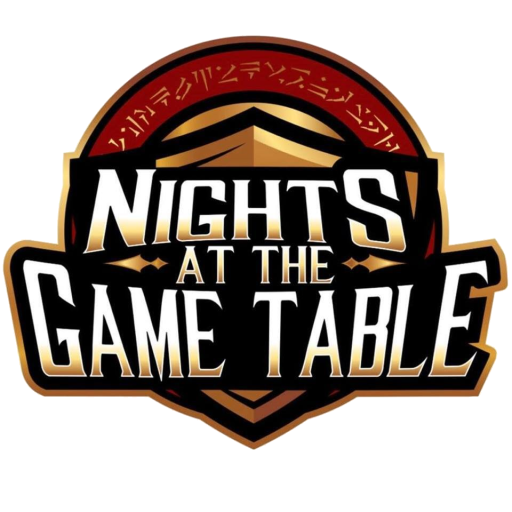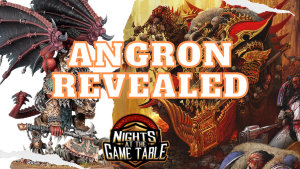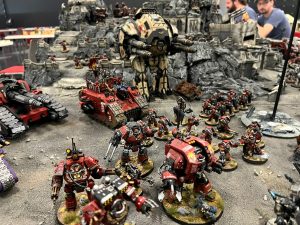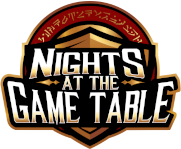Kill Teams is fresh off the press, and it’s quite an awesome game. It follows a similar ruleset to 40K, while having just enough differences to truly make it feel like it is its own game, and not just “40K with very few models”. To help you get the most out of your games of Kill teams, we’re continuing our series breaking down everything you could want to know about Matched Play, including the Command Roster, Specializations, the Scouting Phase, and more! This way, you’ll be completely prepared to go into any game of Kill Teams and stand a great chance of winning!
This week, we’re taking a look at an extra phase exclusive to Kill Team: The Scouting Phase! Proper recon is essential to any Army’s victory, and nowhere is this more true than Kill Team.
 Matched Play games introduce an extra part of setting up a game, called the Scouting Phase. It occurs after all other pre-game generation has occurred (picking your kill team, terrain and objectives, etc), but before players actually put models down. It’s a fairly simple phase mechanically, but it’s heavy on mind games.
Matched Play games introduce an extra part of setting up a game, called the Scouting Phase. It occurs after all other pre-game generation has occurred (picking your kill team, terrain and objectives, etc), but before players actually put models down. It’s a fairly simple phase mechanically, but it’s heavy on mind games.

Both players secretly take a D6 and place it in front of them, hidden from their opponent. They then simultaneously reveal their D6’s, and an effect occurs based on the facing that each player set their D6 to. Let’s start by just briefly going over what each D6 option does, and then we’ll talk some basic strategy to help you get the most out of the phase.
1. Scout Out Enemy Forces: You get to set aside 20% of your Kill Team, rounded up, and deploy them after both players are finished deploying. If both players select this, both players roll off. The winner gets to use the effect, the loser of the roll off gets nothing.
2. Plant Traps: Make D3 pieces of terrain “booby trapped”, only you know which pieces are trapped. When your opponent moves within 1” of the terrain, they roll a d6. On a 1, the model takes a Mortal Wound. After that, enemy models treat the terrain as Dangerous.
3. Disarm Traps: If your opponent chooses Plant Traps, they don’t get to booby trap any terrain. If they don’t choose to Plant Traps, you get nothing.
4. Scout Out Terrain: You get to ignore movement penalties for D3 pieces of Difficult or Dangerous terrain. In addition, if you suffer a mortal from a Dangerous terrain test on one of the pieces of terrain you chose, you have a 5+ to negate any Mortal Wounds from that test.
5. Take Forward Positions: After both teams are set up, you get to make a normal move with 20% of your Kill Team, rounded up. If both players choose this, roll off, and winner gets to move, loser gets nothing.
6.Eliminate Sentries: If your opponent chooses Take Forward Positions, then you get to shoot at a model that moved as a part of Take Forward Positions with 20% of your army.
So, we have our options. Much like Specialisms, not all options are created equally. We’re going to break down which options should be on your mind and when by rating them, and you’ll get an explanation for why.
In first place, we have “Take Forward Positions”. Kill Team is played on a very small map, so getting to move even a couple of models once can make a drastic difference in positioning for your army. A free move can allow a gunner to be in position to control a board section right out of the gate, or it can shave a turn off the delay for some melee units to get into position, sometimes even allowing a Turn 1 charge.
The catch is that this will be a common choice for your opponent to pick as well. At nothing else, this forces a roll off, which leaves you at the mercy of dice as to who actually gets this benefit. So, expect to often be stuck in a roll off situation against your opponent. This isn’t ideal, but it is better than letting your opponent receive this result uncontested.
 Next up, we have a tie with Scout Out Enemy Forces and Scout Out Terrain. These are both highly situational, but when the situation comes up it’s worth it. Scout Enemy Forces allows you to somewhat outdeploy your opponent, and that can be almost as good as getting free movement if you’re playing a gunline and they went melee. There are a couple of missions that are heavily movement intensive, which makes this option attractive.
Next up, we have a tie with Scout Out Enemy Forces and Scout Out Terrain. These are both highly situational, but when the situation comes up it’s worth it. Scout Enemy Forces allows you to somewhat outdeploy your opponent, and that can be almost as good as getting free movement if you’re playing a gunline and they went melee. There are a couple of missions that are heavily movement intensive, which makes this option attractive.
On the other hand, Scout Out Terrain is very narrow, but if you happen to find yourself playing on a table that has a lot of difficult or dangerous terrain, it becomes a very useful and safe choice. Your opponent has no way to stop this choice in particular, which also helps. Keep it in mind for tables that are riddled with Difficult/Dangerous terrain, but otherwise never call it.
Coming up in third, we have Planting Traps and Disarming Traps. Put simply, Planting Traps is unlikely to do anything in a game. Once in a full moon, you’ll get your opponent to trigger this with a really critical model and then kill it. Most of the time, this will do very little to nothing. Against really elite armies, Planting Traps moves up a peg, as the value for flat out killing something like a Marine is attractive, even if it’s unlikely.
Disarm Traps receives a low rank simply because of how high risk it is. It only counters a relatively unlikely option at best, and at worse you allow your opponent to perform a more powerful choice uncontested. If you’re really concerned about Traps for some reason, than you can pick it for peace of mind.
In last place by a wide margin, we have Eliminate Sentries. The problem with Eliminate Sentries is the logistics of when the choice is revealed versus when the choice takes effect. Players reveal their decisions before they deploy their armies. So if I pick “Take Forward Positions”, and you pick “Eliminate Sentries”, I know this before we deploy. So, I know that after we deploy, whatever units I move are going to get shot at. This can be easily beat by simply moving units out of LOS, or staying out of a certain range and inducing so many negative penalties the attack becomes a Hail Mary

All in all, your opponent has way too much knowledge for you to get any realistic use out of Eliminate Sentries, unless your opponent makes some critical mistakes, or you guys don’t have enough terrain on the table. If the timing for this was after deployment, Eliminate Sentries would be an extremely powerful choice. Exception: If you’re playing a static gunline, than this becomes a powerful counter choice to Take Forward Positions to at least discourage super aggressive moves.
Although in particular I would never recommend “Eliminate Sentries”, most of the other choices gain or lose value based on the opponent and map. So, even though bonus movement is great and should be your default choice, keep your options open! You’ll have games where you choose something like “Scout Out Enemy Terrain”, but your default should usually be Forward Positions.
With these ideas in mind, your Scouting Phase can be used to outmanuever your opponent, and potentially put you in a position to win even before the first shot has been fired!

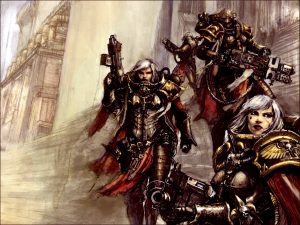
Warhammer 40k Winning Lists June 11th Edition
With summer in full swing, we see a refreshing number of tournaments kick back up globally, ranging from 3 to 7 rounds
